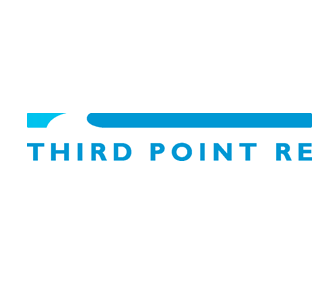Bermuda-based, hedge fund backed reinsurer Third Point Re has reported a net loss for both the fourth-quarter and full-year 2018, driven by a poor investment performance and modest catastrophe losses.
 For Q4, Third Point Re recorded a net loss of $298 million, driven by a $278 million net investment loss and an underwriting loss of $24.4 million, primarily as a result of the California wildfires.
For Q4, Third Point Re recorded a net loss of $298 million, driven by a $278 million net investment loss and an underwriting loss of $24.4 million, primarily as a result of the California wildfires.
For the full-year 2018 the story is a similar one for Third Point Re, with a net loss of $318 million, underpinned by a $251 million investment loss and a $42.1 million underwriting loss.
In recent times, the hedge fund backed reinsurance model has struggled. The model looks to offset poor investment conditions with underwriting gains, and, when the underwriting environment is challenging the investment return is expected to offset this.
However, when both the investment and underwriting landscapes are challenging, as was the case in Q4, losses can occur on both sides of the balance sheet, leading to a substantial, overall net loss for the company.
Third Point Re’s President and Chief Executive Officer (CEO), Rob Bredahl commented: “The fourth quarter of 2018 was a difficult quarter for us. Poor investment performance combined with modest catastrophe losses led to a significant net loss for the quarter and year. Equity market weakness during the fourth quarter of 2018 led to an investment return of negative 11.4% in the quarter and negative 10.8% for the year.
“We remain committed to Third Point LLC given their long-term track record and their ability to navigate challenging investment conditions. During the fourth quarter, we recorded $18.5 million of catastrophe losses related to the California wildfire and other catastrophe events. Our combined ratio for the fourth quarter was 111.6%, bringing our year to date combined ratio to 106.8%.”
The $18.5 million hit from the California wildfires occurred despite the firm having not specifically written any property catastrophe contracts in 2018 or in prior years. Instead, Third Point Re was exposed to the events through liability reinsurance of the utilities in California in 2018. This drove a loss of $11.3 million, with the remainder of the $18.5 million cat hit coming from incidental exposure to catastrophic events on two of the firm’s Florida homeowners contracts (Hurricane Michael) and on two whole account reinsurance contracts.
Within its property and casualty reinsurance segment, gross premiums written (GPW) fell to $120.1 million in Q4 and to $578.3 million for the full-year, while net earned premiums increased for both periods, in light of retroactive exposures in reinsurance contracts that were written and fully earned in the current year period.
The significant investment loss had a big impact on the company’s results for the fourth-quarter and the full-year 2018, with the majority of this being driven by losses generated by long equity investments, a merger arbitrage position, and some exposure to cyclical sectors.
The firm announced previously that it would commence underwriting property catastrophe business in 2019, and Bredahl commented on its experience at the January 1st renewals.
“Consistent with our previously announced plans, we began writing a modest amount of property catastrophe business in the first quarter of 2019. We are pleased with the portfolio that we have constructed at the important January 1 renewal date, which benefited from some modest improvements in pricing, and we continue to expect our combined ratio to trend to below 100% as we earn in the catastrophe premium and continue to expand our underwriting platform into other higher margin types of reinsurance and lines of business.”
It will be very interesting to see how Third Point Re performs through 2019 in light of the fact it took advantage of improved rates at the January renewals and started to write a modest volume of property cat business. With the investment landscape remaining challenging, the firm will likely be hopeful that the diversification offered by the inclusion of catastrophe risk generates more profit in the months ahead, ultimately strengthening its balance sheet in a testing environment.


